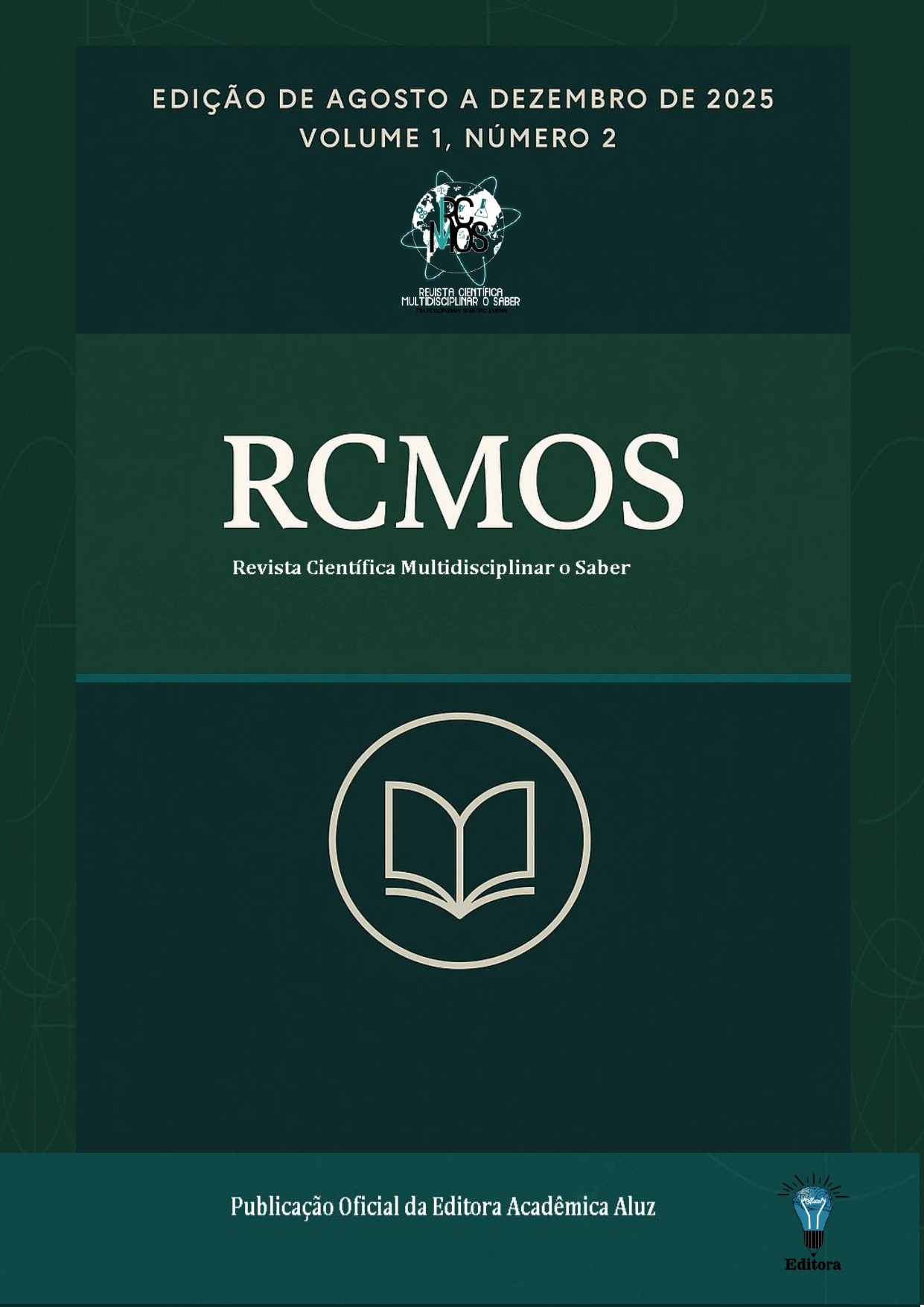Nfc nanocomposites structureds using CNC as mechanical agent for reinforced strength properties
Nfc nanocomposites structureds using CNC as mechanical agent for reinforced strength properties
DOI:
https://doi.org/10.51473/rcmos.v1i2.2025.1278Keywords:
Nanocrystals, nanofibrillated cellulose, nanocomposites, nanofilms.Abstract
The development of nanocomposites forming films from nanofibrillated cellulose (NFC) and nanocrystalline cellulose (CNC) present as a sustainable alternative for application in many industrial materials, due to their different mechanical and optical characteristics. Thus the aim of this study was to evaluate the potential of NFC and CNC in the production of transparent nanocomposites with high mechanical resistance. The NFC-CNC nanocomposites were produced according to casting technique, using as the polymeric matrix CNF dispersion for different dosages CNC as mechanical reinforcement. The base polymer NFC used 10 g/m² for this nanocelulose that in its suspended form as CNC was applied in doses of 3%, 6% and 12% after suspension in water. The addition of cellulose nanocrystals allowed the reduction of the surface roughness of the resulting nanocomposites. The maximum load increased 103 and 287% for CNC applications 3 and 12% respectively. While the modulus increased 591% to 12% of the dose CNC. The tensile strength increased from 61% with the addition of 12% CNC. Likewise, the physical properties of apparent specific volume and weight showed significant gains. Due to CNC incorporation allowed reducing the opacity to 53% with consequent increased in transparency of nanocomposites. Nanocomposites containing CNC showed higher thermal stability with less weight loss compared to references containing only CNF. The CNC incorporated into the NFC polymeric matrix, results in the nanocomposite formation with high strength and transparency, is a viable alternative technology.
Downloads
References
ASTM. (2009). ASTM D 882-09 Standard test method for tensile properties of thin plastic sheeting. West Conshohocken, PA: ASTM International.
ABE, K.; YANO, H. Comparison of the characteristics of cellulose microfibril aggregates of wood, rice straw and potato tuber. Cellulose, v. 16, n. 6, p. 1017-1023, 2009. DOI: https://doi.org/10.1007/s10570-009-9334-9
BARDET, R.; BELGACEM, M. N.; BRAS, J. Different strategies for obtaining high opacity films of MFC with TiO2 pigments. Cellulose, v. 20, n. 6, p. 3025-3037, 2013. DOI: https://doi.org/10.1007/s10570-013-0025-1
CHUN, S.; LEE, S.; DOH, G.; LEE, S.; KIM, J. H. Preparation of ultrastrength nanopapers using cellulose nanofibrils. Journal of Industrial and Engineering Chemistry, v. 17, n. 13, p. 521-526, 2011. DOI: https://doi.org/10.1016/j.jiec.2010.10.022
DUFRESNE, A. Processing of polymer nanocomposites reinforced with polysaccharide
nanocrystals. Macromolecules, v. 15, p. 4111–4128, 2010. DOI: https://doi.org/10.3390/molecules15064111
ESPITIA, P. J. P., SOARES,N. F. F., TEÓFILO, R. F., COIMBRA, J. S. R., VITOR, D. M., BATISTA, R. A., FERREIRA, S. O., ANDRADE, N. J., MEDEIROS, E. A. A. Physical–mechanical and antimicrobial properties of nanocomposite films with pediocin and ZnO nanoparticles. Carbohyd Polym, 94:199-208, 2013. DOI: https://doi.org/10.1016/j.carbpol.2013.01.003
GEORGE, J.; SREEKALA, M. S.; THOMAS, S. A review on interface modification and characterization of natural fiber reinforced plastic composites. Polymer Engineering and Science, v. 41, n. 9, p. 1471–1485, 2001. DOI: https://doi.org/10.1002/pen.10846
HABIBI, Y.; LUCIA, L. A.; ROJAS, O. J. Cellulose nanocrystals: chemistry, self-assembly, and applications. Chemical Reviews, vol. 110, nº 6, p. 3479-3500, 2010. DOI: https://doi.org/10.1021/cr900339w
HASSAN, M. L.; MATHEW, A. P.; HASSAN, E. A.; EL-WAKIL, A. N.; OKSMAN, K. Nanofibers from bagasse and rice straw: process optimization and properties. Wood Sci Technol, v. 46, p. 193–205, 2012. DOI: https://doi.org/10.1007/s00226-010-0373-z
IWAMOTO, S.; NAKAGAITO, A. N.; YANO, H. Nano-fibrillation of pulp fibers for the processing of transparent nanocomposites. Applied Physics A, v. 89, n. 2, p. 461-466, 2007. DOI: https://doi.org/10.1007/s00339-007-4175-6
JOSHI, S. V.; DRZAL, L. T.; MOHANTY, A. K.; ARORA, S. Are natural fiber composites environmentally superior to glass fiber reinforced composites? Composite Part A, v. 35, p. 371–376, 2004. DOI: https://doi.org/10.1016/j.compositesa.2003.09.016
KHALIL, H. P. S. A.; DAVOUDPOUR, Y.; ISLAM, N.; MUSTAPHA, A.; SUDESH, K.; DUNGANI, R.; JAWAID, M. Production and modification of nanofibrillated cellulose using various mechanical processes: A review. Carbohydrate Polymers, v. 99, p. 649– 665, 2014. DOI: https://doi.org/10.1016/j.carbpol.2013.08.069
LI, X.; TABIL, L. G.; PANIGRAHI, S. D. Chemical treatments of natural fiber for use in natural fiber–reinforced composites: A review. Journal of Polymer Environment, v. 15, p. 25–33, 2007. DOI: https://doi.org/10.1007/s10924-006-0042-3
MANDAL, A.; CHAKRABARTY, D. Studies on the mechanical, thermal, morphological and barrier properties of nanocomposites based on poly(vinyl alcohol) and nanocellulose from sugarcane bagasse. Journal of Industrial and Engineering Chemistry, v. 20, p. 462–473, 2014. DOI: https://doi.org/10.1016/j.jiec.2013.05.003
MANOCHA, L. M.; VALAND, J.; PATEL, N.; WARRIER, A.; MANOCHA, S. Nanocomposites for structural applications. Indian Journal of Pure and Applied Physics, v. 44, p. 135–142, 2006. DOI: https://doi.org/10.1016/j.carbon.2005.08.012
NAKAGAITO, A.N.; FUJIMURA, A.; SAKAI, T.; HAMA, Y.; YANO, H. 2009. Production of microfibrillated cellulose (MFC)-reinforced polylactic acid (PLA) nanocomposites fromsheets obtained by a papermaking-like process. Compos Sci Technol 69:1293–7, 2009. DOI: https://doi.org/10.1016/j.compscitech.2009.03.004
NOGI, M. et al. Higth thermal stability of optical transparency in cellulose nanofiber paper. Applied Physics Letters, v. 102, n. 108, p. 102-106, 2013. DOI: https://doi.org/10.1063/1.4804361
PRINS, M. J.; PTASINSKI, K. J.; JANSSEN, F. J. J. G. Torrefaction of wood. Part 1.
Weight loss kinetics. Journal of Analytical and Applied Pyrolysis, v. 77, p. 28–34, 2006. DOI: https://doi.org/10.1016/j.jaap.2006.01.002
RAMAZANOV, M. A.; ALI-ZADE, R. A.; AGAKISHIEVA, P. B. Structure and magnetic properties of nanocomposites on the basis PE+Fe3O4 И PVDF+ Fe3O4. Digest Journal of Nanomaterials and Biostructures, v. 5, n. 3, p. 727–733, 2010.
RAAD, T.J.; PINHEIRO, P.C.C.; YOSHIDA, M.I. Equação geral de mecanismos cinéticos da carbonização do Eucalyptus spp. Cerne, Lavras, v. 12, n. 2, p. 93-106, 2006.
RANDRIAMANANTENA, T.; RAZAFINDRAMISA, F.L.; RAMANANTSIZEHENA, G.; BERNES, A.; LACABANE, C. Thermal behaviour of three woods of Madagascar by thermogravimetric analysis in inert atmosphere. In: Proceedings of the Fourth High-Energy Physics International Conference, 2009, Antananarivo, Madagascar.
SEYDIBEYOGLU, M. O.; OKSMAN, K. Novel nanocomposites based on polyurethane and microfibrillated cellulose. Composite Science and Technology, v. 68, p. 908–914, 2008. DOI: https://doi.org/10.1016/j.compscitech.2007.08.008
SIRÓ, I.; PLACKETT, D.; HEDENQVIST, M.; ANKERFORS, M.; LINDSTROM, T. Highly Transparent Films from Carboxymethylated Microfibrillated Cellulose: The Effect of Multiple Homogenization Steps on Key Properties. Journal of Applied Polymer Science, v. 119, n. 5, p. 2652–2660, 2011. DOI: https://doi.org/10.1002/app.32831
SIRÓ, I.; PLACKETT, D. Microfibrillated cellulose and new composite materials: a review. Cellulose, v. 17, n. 3, p. 459-464, 2010. DOI: https://doi.org/10.1007/s10570-010-9405-y
TAPPI standard (2006) T220 sp-06, Physical testing of pulp handsheets.
TAPPI standard (2006) T551 om-06, Thickness of paper and paperboard (Soft platen method).
TAPPI standard (2008) T410 om-08, Grammage of paper and paperboard (Weight per
unit area).
TAPPI standard (2007) T1214 sp-07, Interrelation of reflectance, R0; Reflectivity, R∞;
Opacity, C0.89; Scattering, s; and Absorption, k.
Technical association of the pulp and paper industry. Tappi standard methods. Atlanta: TAPPI, 2000.
TEIXEIRA, E. M.; CORRÊA, A. C.; MANZOLI, A.; LEITE, F. L.; OLIVEIRA, C. R.; MATTOSO, L. H. C.Cellulose nanofibers from white and naturally colored cotton fibers. Cellulose, v. 17, p. 595–606, 2010. DOI: https://doi.org/10.1007/s10570-010-9403-0
TONOLI, G.H.D.; TEIXEIRA, E.M.; CORRÊA, A.C.; MARCONCINI, J.M.; CAIXETA, L.A.; PEREIRA-DA-SILVA, M.A.; MATTOSO, L.H.C. Cellulose micro/nanofibres from Eucalyptus kraft pulp: Preparation and properties. Carbohydrate Polymers, v. 89, p. 80– 88, 2012. DOI: https://doi.org/10.1016/j.carbpol.2012.02.052
TUNC, S., & DUMAN, O. Preparation of active antimicrobial methyl cellulose/
carvacrol/montmorillonite nanocomposite films and investigation of carvacrol release. LWT - Food Science and Technology, 44(2), 465–472, 2011. DOI: https://doi.org/10.1016/j.lwt.2010.08.018
WANG, H.; LI, D.; ZHANG, R. Preparation of ultralong cellulose nanofibers and optically transparente nanopapers derived from waste corrugate paper pulp. BioResources, v. 8, n. 1, p. 1374-1384, 2013. DOI: https://doi.org/10.15376/biores.8.1.1374-1384
WANG, N.; DING, E.; CHENG, R. Thermal degradation behaviours of spherical cellulose nanocrystals with sulfate groups. Polymer, v. 48, p. 3486–3493, 2007. DOI: https://doi.org/10.1016/j.polymer.2007.03.062
YU, L.; DEAN, K.; LI, L. Polymer blends and composites from renewable resources. Prog. Polymer Sci., 31(6), 576-602, 2006. DOI: https://doi.org/10.1016/j.progpolymsci.2006.03.002
Downloads
Additional Files
Published
Issue
Section
Categories
License
Copyright (c) 2025 Renato Augusto Pereira Damásio, Cícero Pola, Fernando Jose Borges Gomes, Elenice Maia, Jorge Luiz Colodette (Autor)

This work is licensed under a Creative Commons Attribution 4.0 International License.
















